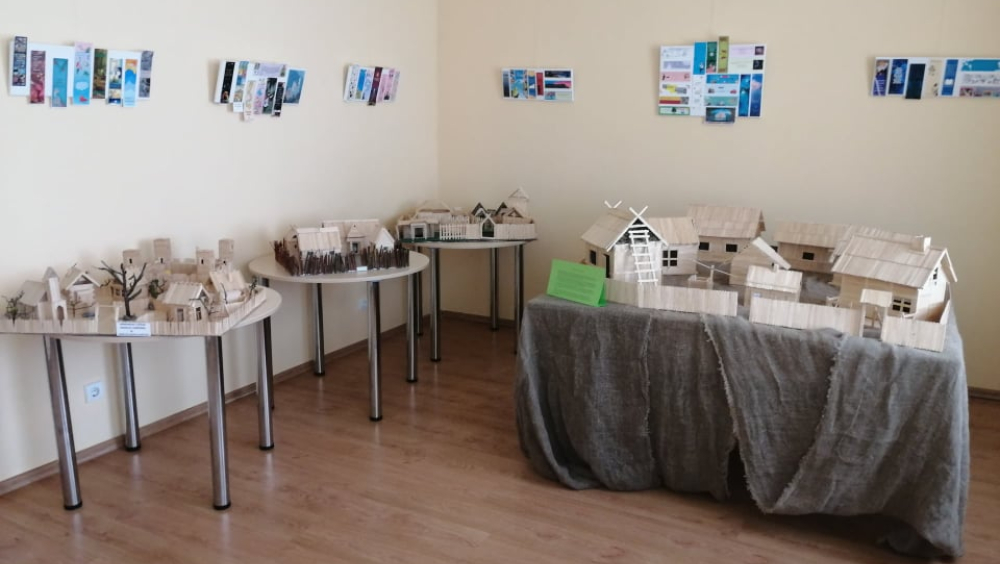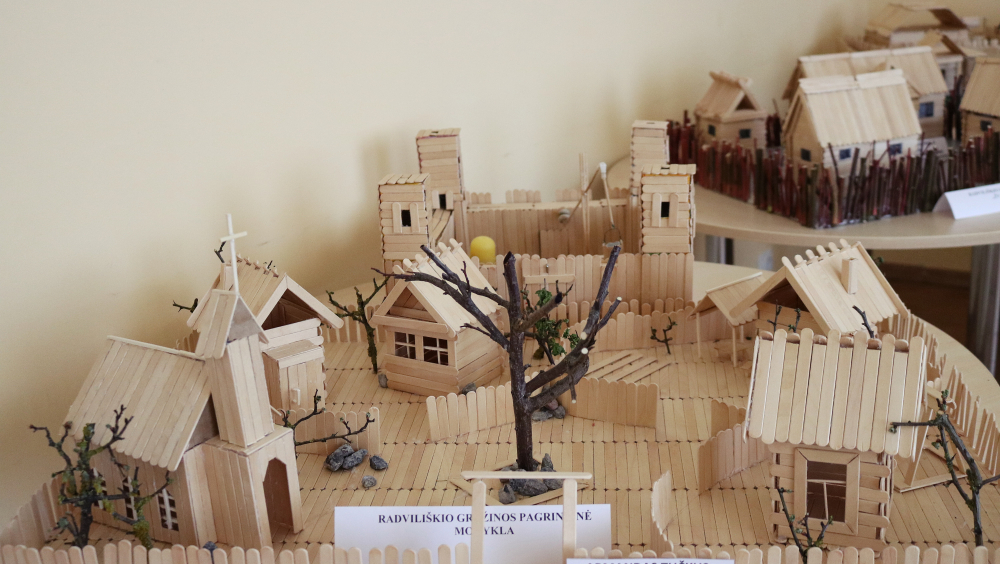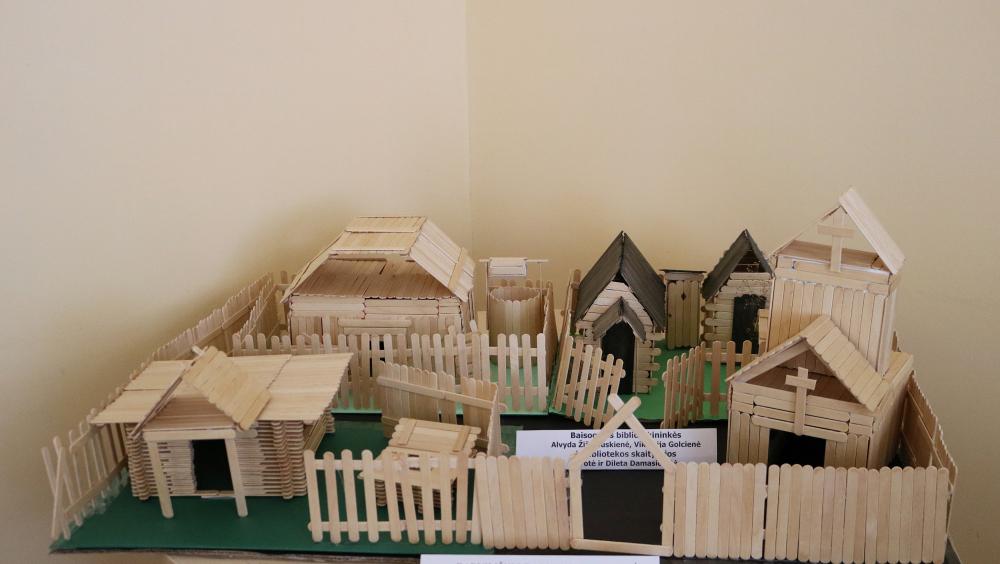The Creative Workshop of an Ancient Settlement
Radviliškis District Municipality Public Library, as a cultural institution, is continuously encouraging its community members (including youth groups, kids and elderly people) to remember and value their own cultural history. The preservation of ones ethnic identity is one of our major objectives. We are executing our goals in many engaging and exciting ways - as our ethnic culture consists not only of folk tales, songs, dances or music - as undeniably important and preservable our folk art is. We as a cultural institution are trying to focus our strengts to the activities that inspire community members, encourages their proactivity in solving global problems, sustainable development processes as well as critical worldview.
Radviliškis District Municipality Public Library, as a cultural institution, is continuously encouraging its community members (including youth groups, kids and elderly people) to remember and value their own cultural history. The preservation of ones ethnic identity is one of our major objectives. We are executing our goals in many engaging and exciting ways - as our ethnic culture consists not only of folk tales, songs, dances or music - as undeniably important and preservable our folk art is. We as a cultural institution are trying to focus our strengts to the activities that inspire community members, encourages their proactivity in solving global problems, sustainable development processes as well as critical worldview. In spring of 2021, Radviliškis Public Library organized a month-long workshops, that included around 100 participants. The participants were the students of Radviliškis V. Kudirka Progymnasium, Radviliškis Gražina Primary School, kids from Radviliškis „Žvaigždutė“ Kindergarden, together with their teachers and parents, as well as the visitors of Radviliškis Public Library's Baisogala affiliate. During the workshops a recyclable material - wooden ice-cream sticks were used to recreate an ancient settlement of Kernavė – a historical city of Lithuania. Kernavė, similarly to Radviliškis District, is known for its hills, about which there are many legends and stories. They were named as Pilies (Castle) hill, Aukuras (Altar) hill, Mindaugo sosto (Mindaugas Throne) hill and Lizdeika hill in 19th. century. The hills are located at the Cultural Reserve of Kernavė - namely its historical buildings and fences were being recreated by the participants of the workshops. An exhibition, which included aforementioned art works, was held at Radviliškis Public Library. During that time the community members, Radviliškis city quests and library visitors were able to observe the display. Virtual exhibition was also created for those not able to attend. The historical area of Kernavė is a vast, 200 hectare archeological site where one can see fragments of medieval city, burial sites etc. It is the place where the history of Lithuania began, the cradle of paganism. It also might have been the capital of Lithuania in Grand Duke Mindaugas times. During its prosperity the town was surrounded by a powerful defensive system of hill forts, it was full of craftsmen, countries first merchants settled down there; the Duke‘s residency was located there too. A Lithuanian state cultural reserve was established in Kernavė in 1989. In 2004 Kernavė Archeological site was included into UNESCO word heritage list, as a unique complex of archeological and historical values that represents the prehistory of Lithuania and the early period of formation of the Lithuanian state. Kernavė has a rich history, that was briefly summarised here, similarly as we summarised it for our workshop participants. This activity was one of many organized by Radviliškis Public Library for European Heritage Days. Aforementioned workshops were a history, art and sustainability lessons, where everyone, no matter age, social status or class were able to participate and express themselves. For us, this activity is an incentive to continue our acquaintance with historical Lithuanian sites and cities. We are hoping to include many more members of our own as well as other communities into creative workshops, related with sustainability, preservation and transmission of our authentic heritage, cultural values and history. We hope that the works created during these workshops, together with accompanying stories, will be seen and heard not only in Lithuania but also across other European countries, thus promoting our history and culture as well as encouraging others to be interested and appreciative of their own cultural heritage and its preservation in variuos forms.
For us, this activity is an incentive to continue our acquaintance with historical Lithuanian sites and cities. We are hoping to include many more members of our own as well as other communities into creative workshops, related with sustainability, preservation and transmission of our authentic heritage, cultural values and history.
We hope that the works created during these workshops, together with accompanying stories, will be seen and heard not only in Lithuania but also across other European countries, thus promoting our history and culture as well as encouraging others to be interested and appreciative of their own cultural heritage and its preservation in variuos forms.
The whole that surrounds us, forming our identity, is a heritage that we seek to present through creative workshops for collaboration. We believe that by building bridges of cooperation and a personal connection with heritage, we will have a slightly different approach to cultural heritage.


